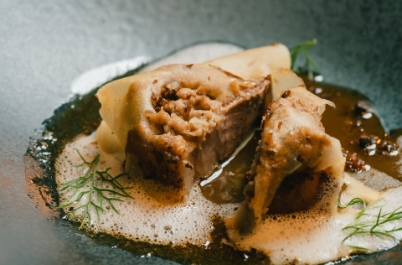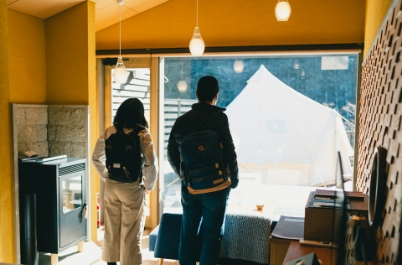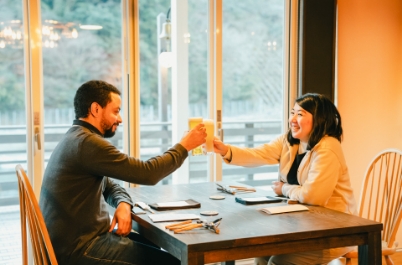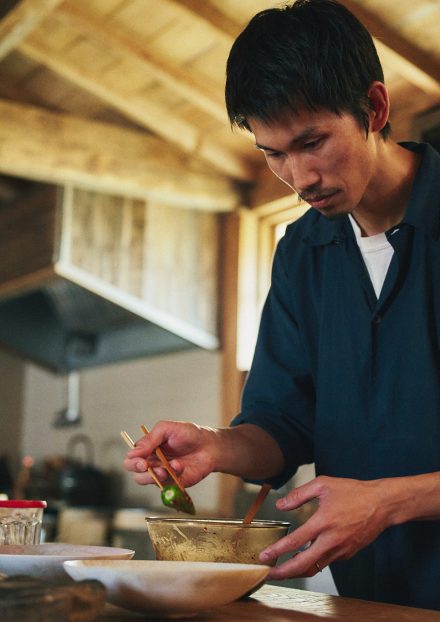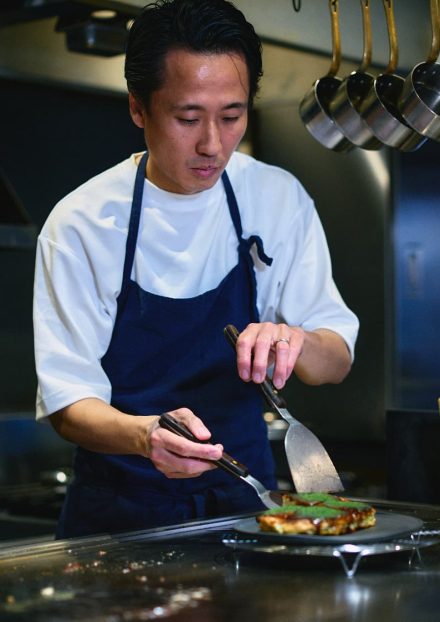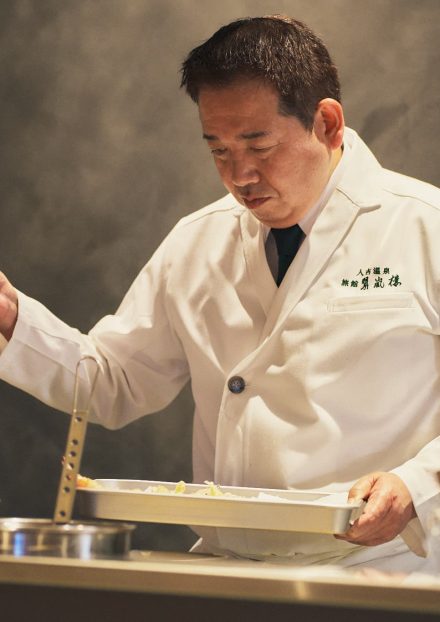It’s not just nature—taste nature at Itsuki, as curated by
Kiyoshi Shiiba of Keiryu Villa ITSUKI
Prolougue
Story 1 Learn the true meaning of spending time surrounded by nature

The Kuma District is located where the Kumamoto, Kagoshima, and Miyazaki prefectures meet. Its people coexist with beautiful rivers and nature. The village of Itsuki, deep in the mountains, is a small community of about 1,000 inhabitants. It is surrounded by a mountain range with peaks of more than 1,000 meters and deep gorges that have been cut by its two rivers, Itsuki-ogawa and Kawabegawa.
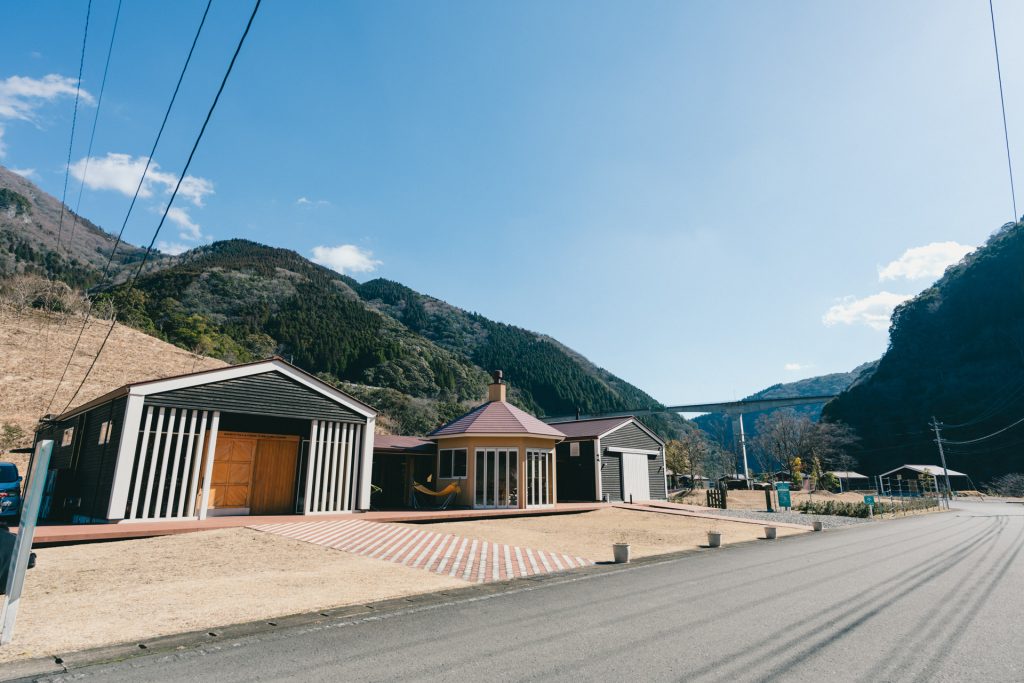
Viewing these limpid streams while driving, one can feel uneasy when even the houses disappear, but then the vista suddenly opens up, and there sits Keiryu Villa ITSUKI.
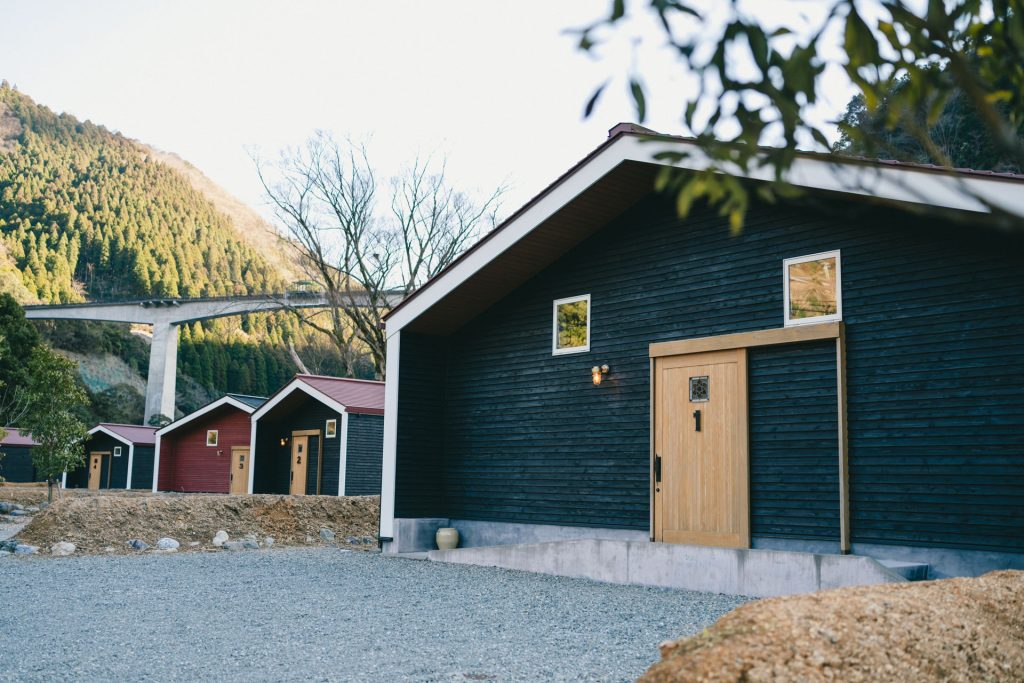
Remarkably, Itsuki is 94% forest. Keiryu Villa ITSUKI is a villa resort opened in 2019 on the site of a former hamlet. Located on the Kawabegawa River, which has been voted the number-one Japanese river for best water quality 16 years in a row, it is a place where one can spend time quietly contemplating the beautiful clear stream called Kawabe Blue.
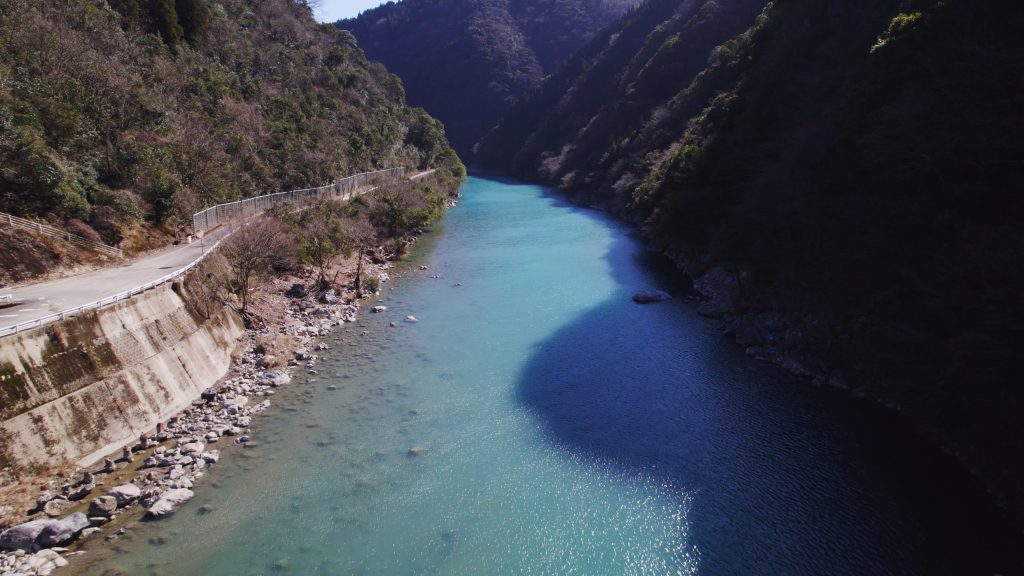
“The six-building villa takes its name from the former hamlet, and the structures were designed to look like the beloved primary school that Itsuki people attended. Most of the wood is from local trees, so the lodging facility is unique to this place.” So says the villa’s head chef, Kiyoshi Shiiba, as he looks at the buildings with heartfelt emotion.
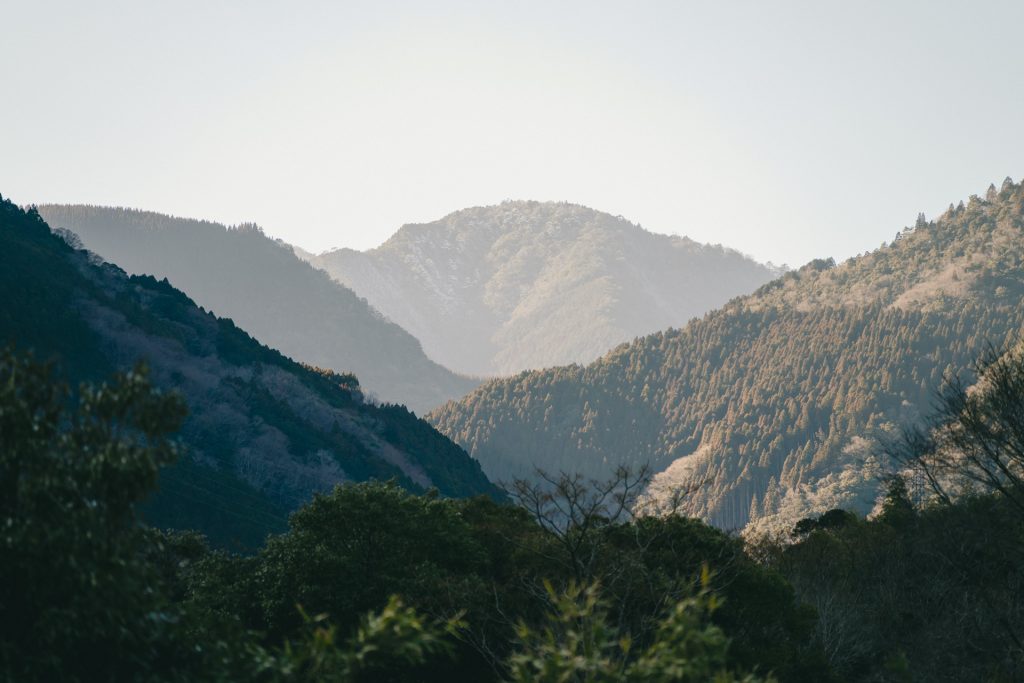
Chef Shiiba comes from the town of Yunomae, which is also in the Kuma District. He grew up surrounded by the same nature as that of Keiryu Villa ITSUKI. From an early age, he cooked on a daily basis, as his family was involved in food. He says that he really started to think about becoming a chef when he was in middle school.
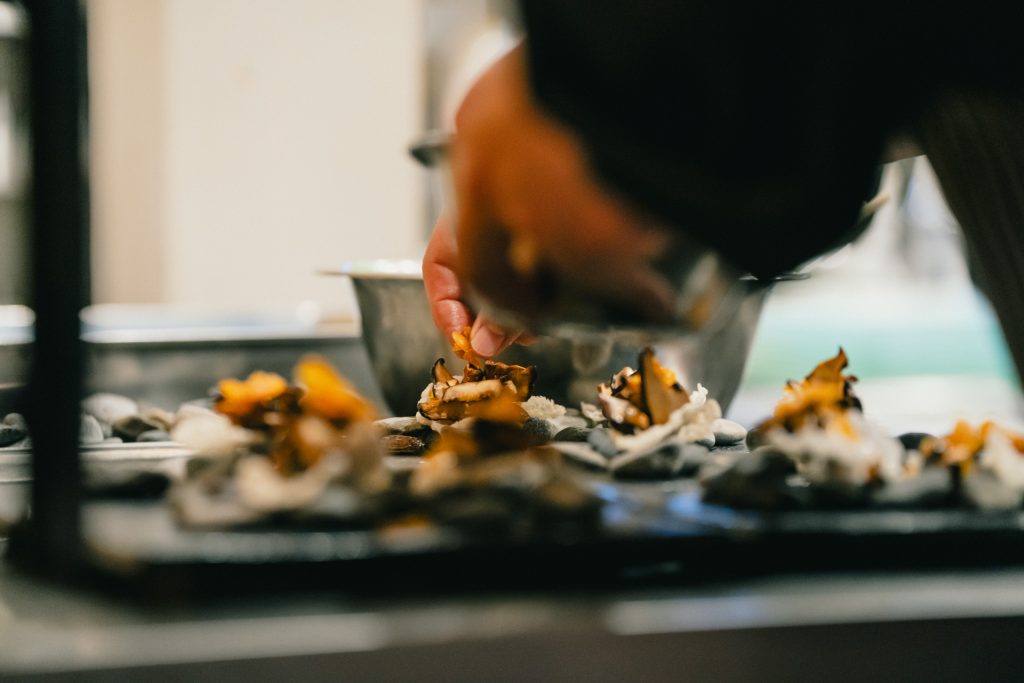
He specialized in Western cuisine when he attended culinary school in Osaka. “I grew up in the countryside, so Western food was my dream,” he says with a laugh. “I want people to eat hot food that brings out the flavors of the ingredients. I thought that Italian food was a dynamic type of cuisine, so I started to learn about it.”
He says that when he returned home, he was shocked to discover that the hometown where he grew up was a treasure trove of wonderful ingredients. Amazing ingredients, such as black pork, venison, shiitake mushrooms, and kunebu oranges, appeared one after another. We will discuss these when we describe the Premium Menu.

When he came to work in Keiryu Villa ITSUKI’s kitchen, his feelings about Hitoyoshi Kuma and Itsuki became even stronger. “I want people to taste and know about the ingredients from Hitoyoshi Kuma.” This has become his foundation as a chef.
“What draws me to ingredients from Hitoyoshi Kuma and Itsuki is their natural flow. Since I grew up close to them, I am comfortable using them. Still, I don’t know everything about them, so I buy them myself. I value the conversations that I have with vendors, and I am looking for encounters with new ingredients all the time.”
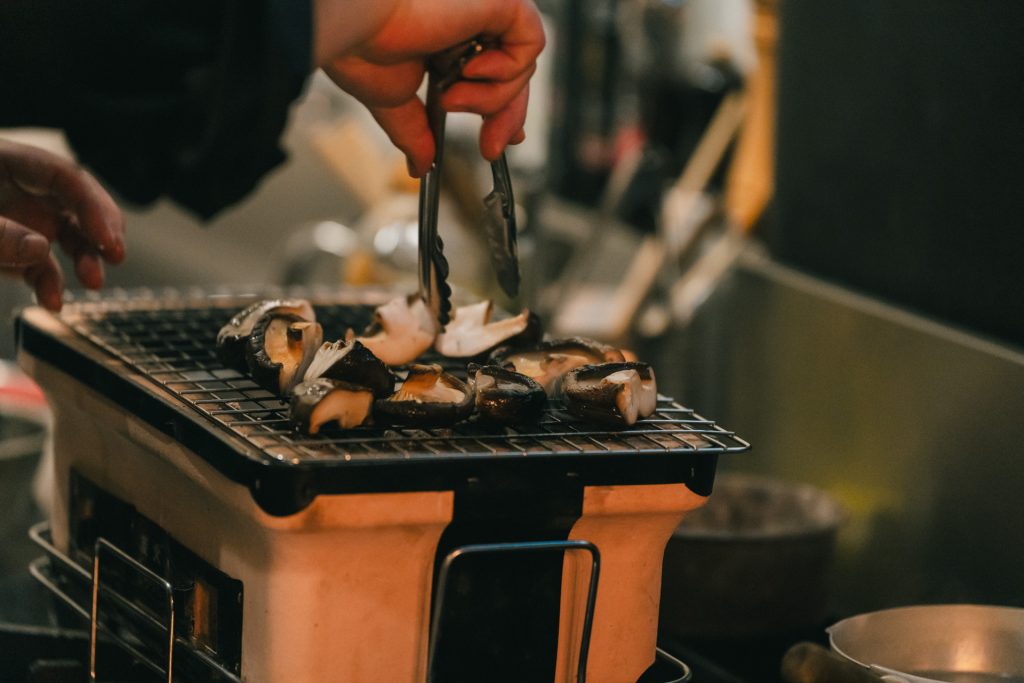
For the people eating them, the ingredients that Chef Shiiba puts in his cuisine are simply one meal. But this is only a small part of what’s available. How much of an impact does one meal have on a person’s entire life? This question is why Chef Shiiba has a burning mission to impart the wonders of Hitoyoshi Kuma’s and Itsuki’s foods by pouring his soul into each and every meal.
Unlike the quiet flow of the Kawabegawa River, there are several wild dishes directly inspired by Chef Shiiba’s thinking. It’s fun to anticipate what kind of food journey will unfold.
Story 2 Like the starting point of a journey—Rustic cuisine filled with yearning
Keiryu Villa ITSUKI opened as a resort villa where people can experience both luxury and rusticity while treasuring the ambiance of Itsuki.

While staying at the villa, one is continuously aware of the beneficence of the forest that constitutes 94% of the village’s area. This feeling extends to the front desk, the waiting area, the guest rooms, wherever one looks. The leaf-dried wood used in the building is dried naturally after the trees are cut down. Such wood is said to absorb shocks, raise the level of humidity, and increase one’s concentration.
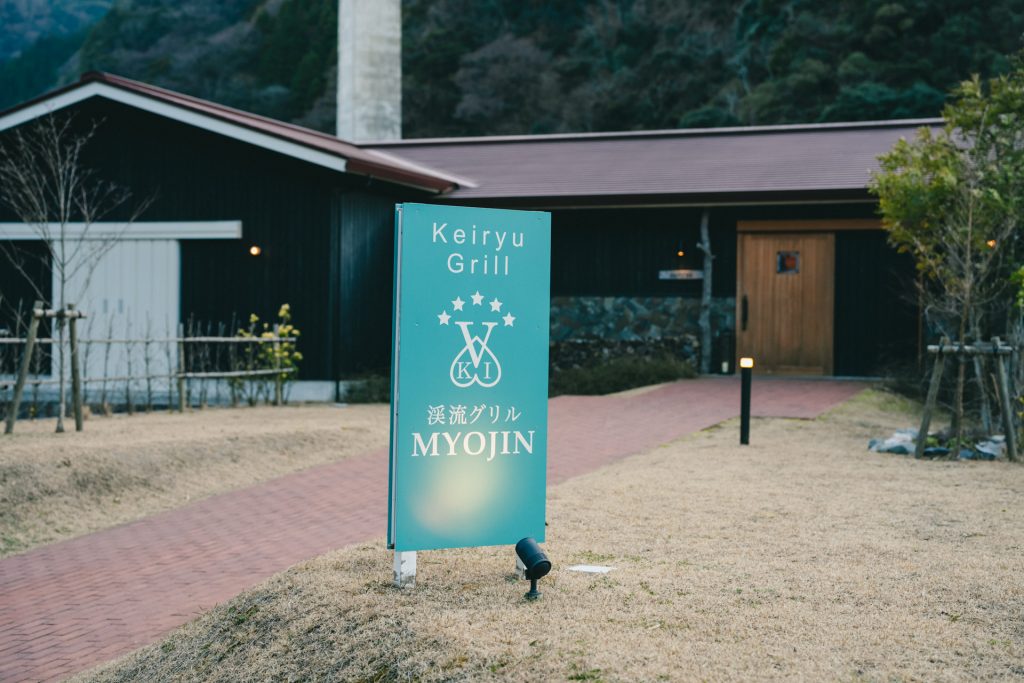
Being in a valley, it gets dark early at Keiryu Villa ITSUKI. Let’s spend some time as you can only do here.
Surrounded by the forest, here the time and mealtime is imbued with the feeling of warmth from the trees.

A cherry tree from Itsuki is turned into beautiful cutlery by Naoki Sato of Boshidora Farm, who is a farmer, a fisher, and a woodworker.in the town of Kosa.

Cutlery plays a lead role in making mealtime proceed smoothly and more enjoyably. Mr. Sato brings a gentle feel, lightness, and visual beauty to the utensils. To show his appreciation, Chef Shiiba helps to seal them with beeswax as well.
As a finishing touch, all of the staff lovingly applies beeswax to the cutlery.
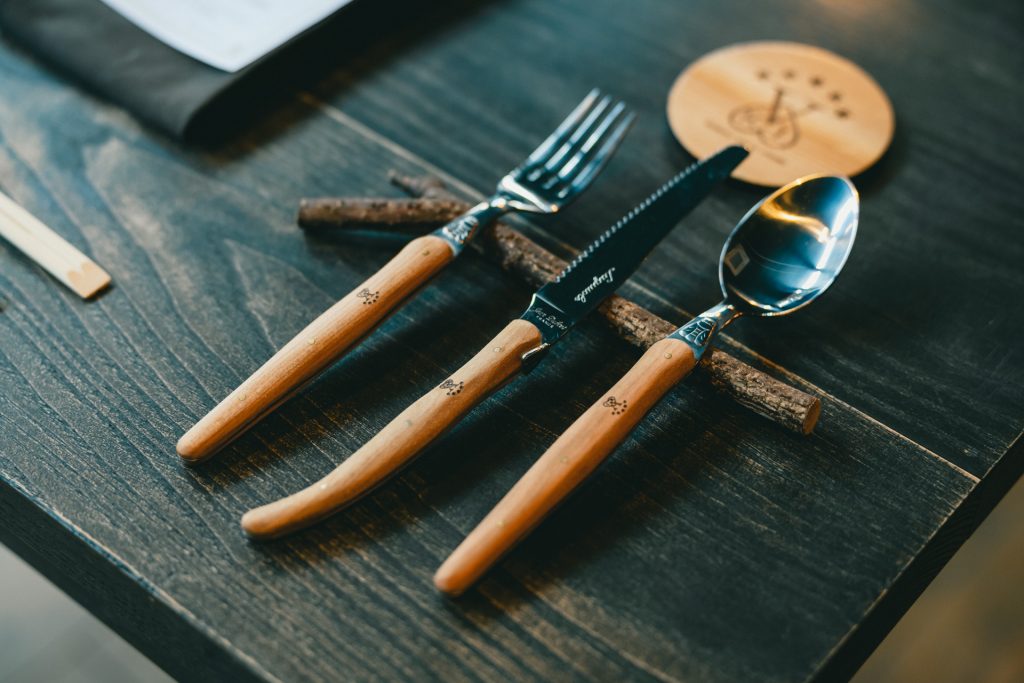
The chopstick rests and coffee cups that appear at the end of the meal are the work of Mr. Nagao at Itsuki Ware Donguri Studio. The pottery made of Itsuki clay possesses a gentle yet casual presence.
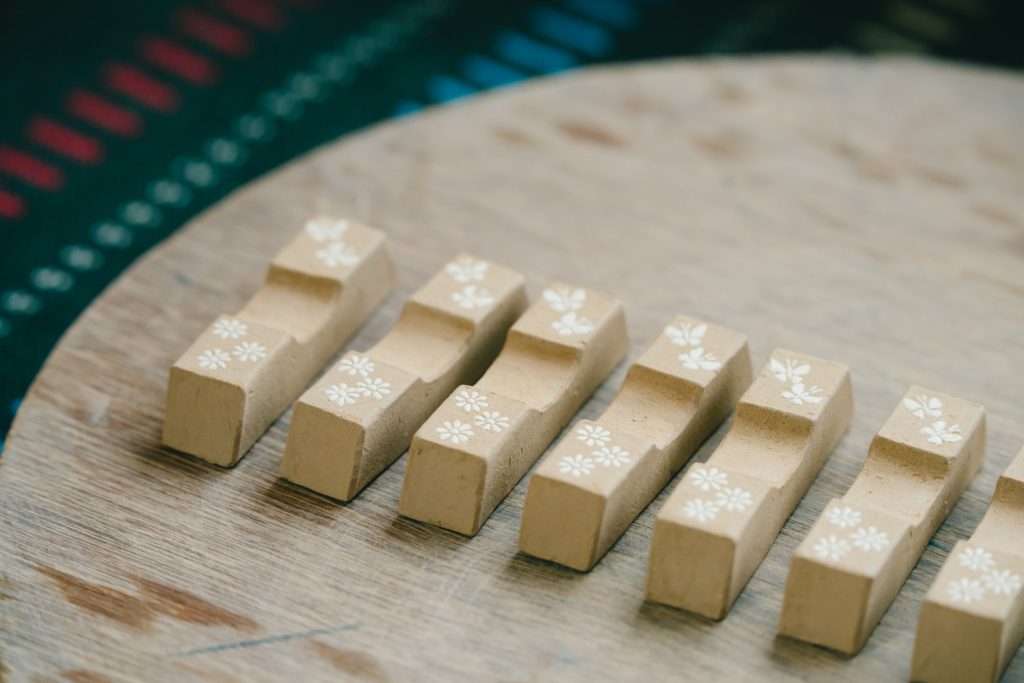
Chef Shiiba and his staff are so caring that one can feel the nature of Itsuki from touching these objects, and expectations build up before the meal begins.
The first course comprises log-grown shiitake mushrooms from a farm in the Seiraku area of Itsuki Village. This is one of the foods that amazed Chef Shiiba after he returned to his hometown.


These meaty and aromatic log-grown shiitake are served in an amuse bouche called “salad of Itsuki log-grown shiitake and homemade bottarga with rice chips.”
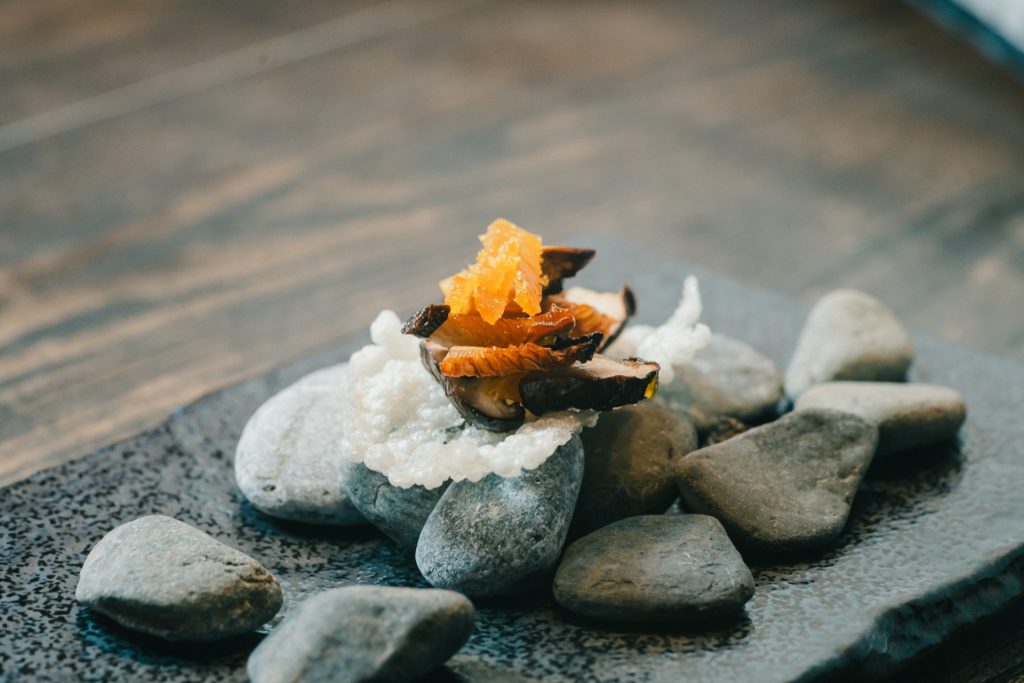
The mushrooms, which have been lightly roasted in an oven to concentrate their flavor, are a good match for the salty bottarga. The rustic method of eating it with your hands lets you feel nature with all five senses.

The black pork from the Kuma region is another food that amazed Chef Shiiba. “First of all, I didn’t know that black pork was being bred in Kuma. When I tried it, the fatty meat was so delicious. I decided that I wanted to let others know about this attraction, so I decided to serve it as pancetta or sous vide.”

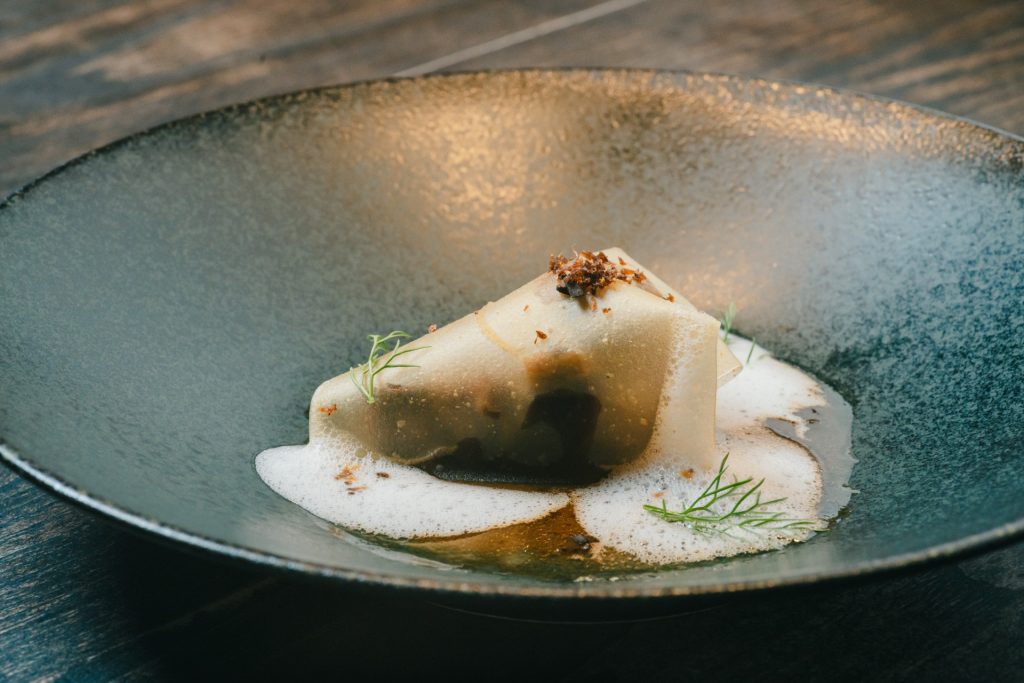
The fish course is “breadcrumb-grilled Sagara sweetfish with a salad of local Kuma vegetables.” The salad greens are organically grown with love by Mr. Furusato, a local farmer. The plate is loaded with vegetables, the aim being to make them look wild and hearty, but they are easy on the stomach so that one can enjoy them to very last bite.

The sweetfish is cooked confit for 5 hours so that even the bones can be eaten. It is surprisingly tender and can be cut with chopsticks.
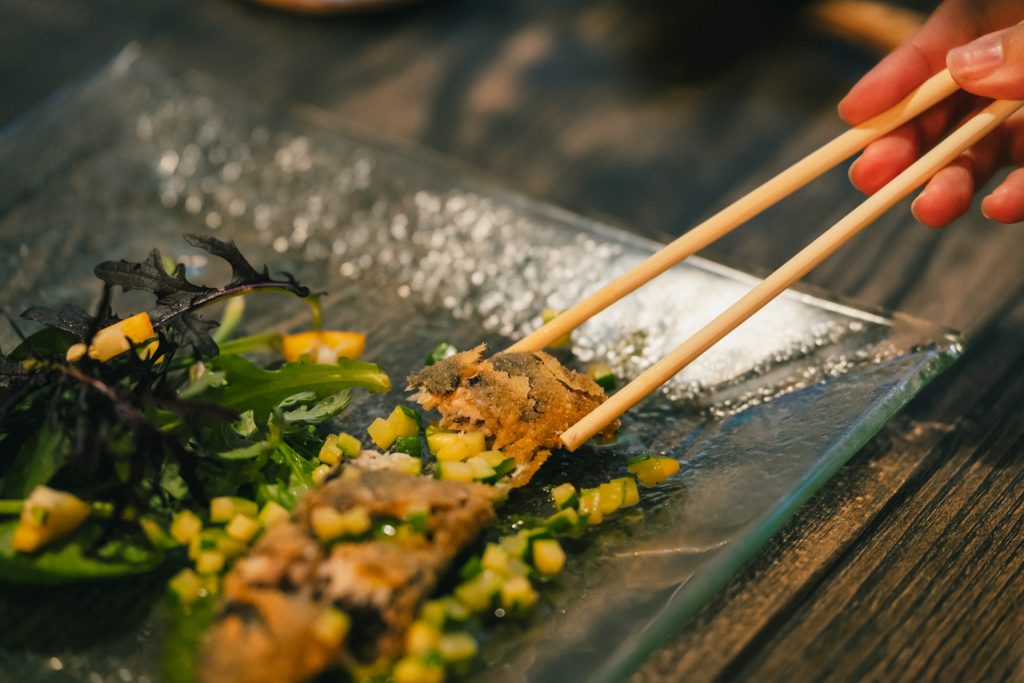
In spring, the salsa verde is made with wild vegetables. Chef Shiiba looks forward to the arrival of spring, saying, “An expert wild vegetable picker is on our staff. They go out looking for butterbur sprouts, watercress, and other vegetables on the grounds and in other places.”
One of Itsuki’s signature foods is the kunebu orange. It is said to be a phantom citrus, and it may be the ancestor of the commonly available Satsuma mandarin orange.
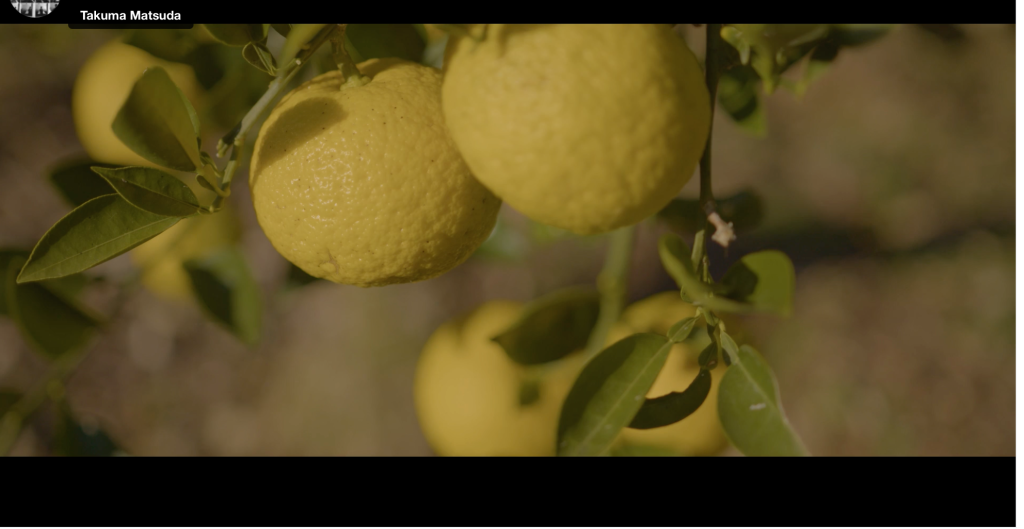
Kunebu oranges have long been grown in Itsuki’s home gardens.
It has a mild tartness, and the rind is not bitter. It is eaten in the form of a granite (frozen dessert) between courses so that diners can look forward to the rest of the meal.
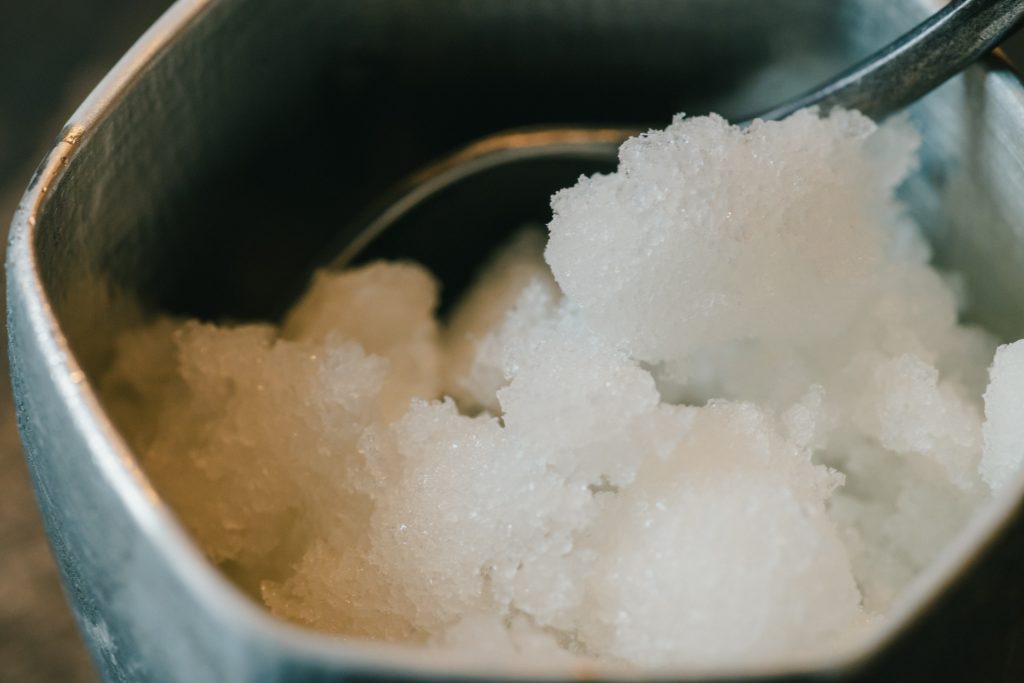
The thick aromatic log-grown shiitake served earlier makes another appearance.

Chef Shiiba chose Italian cuisine because he wanted to serve freshly made and piping hot food without making many changes to the ingredients. This is epitomized in the main course, which is a sous vide of Itsuki venison roast and Kuma black pork plus charcoal-grilled Sakamoto beef, served in a Dutch oven.
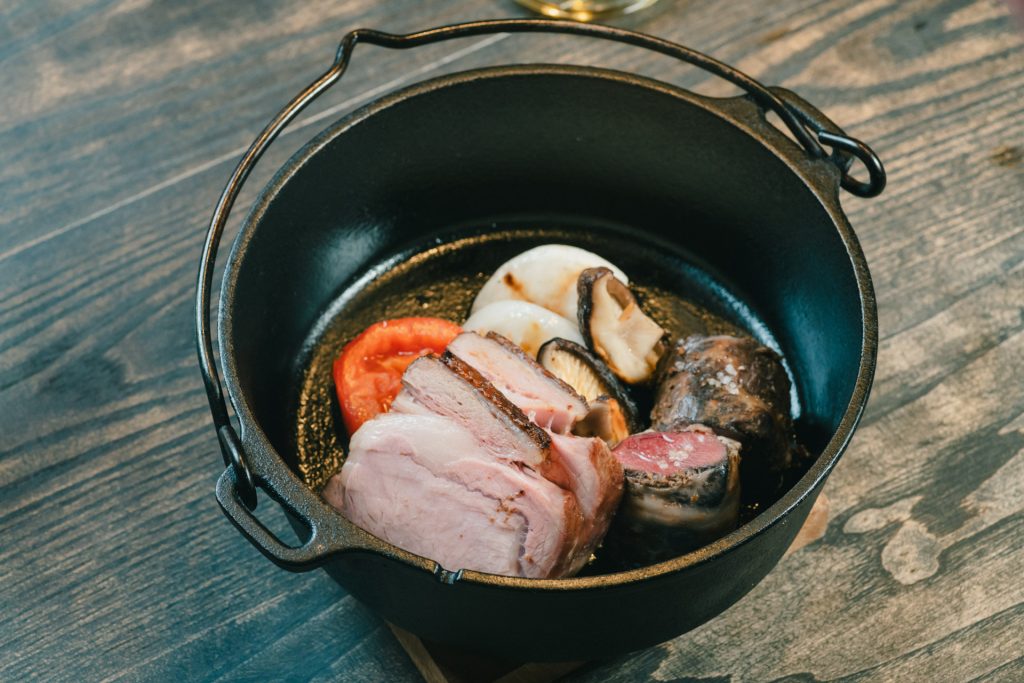
Chef Shiiba and other chefs in Kumamoto like venison from Itsuki because of its nice texture and lack of odor. This is because the deer grew up in a natural environment with plenty to eat and clean water.
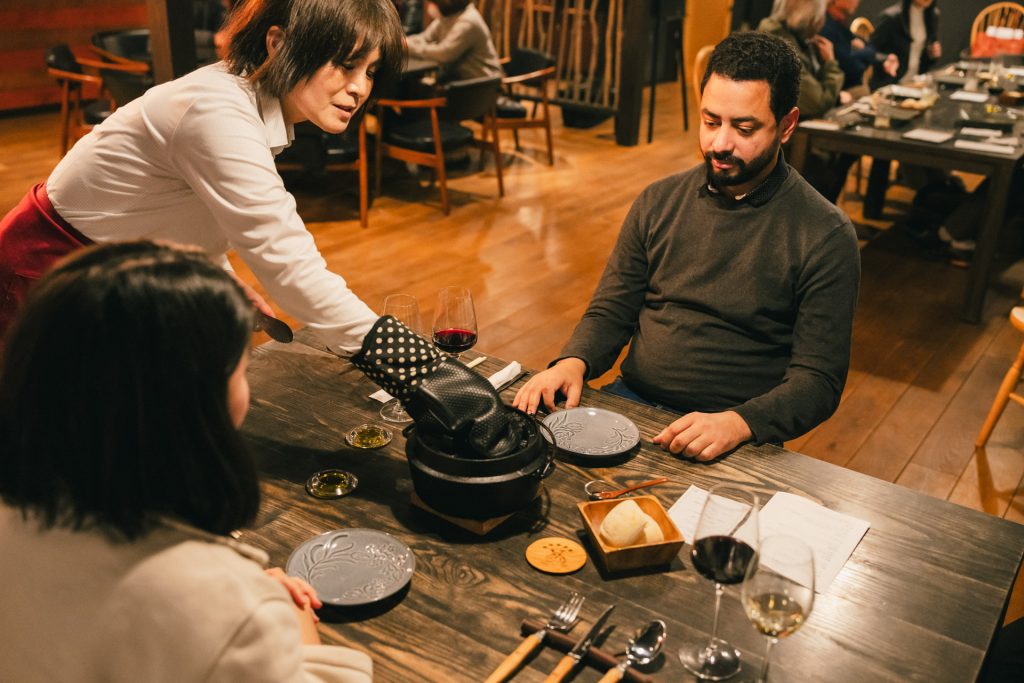
The pot is opened at the table, and guests put on the toppings themselves. Today’s sauce has a red wine base simmered with cassis, fond de veau, and blueberries. Served with gravy and charcoal-grilled vegetables, this dish has a taste out of this world.
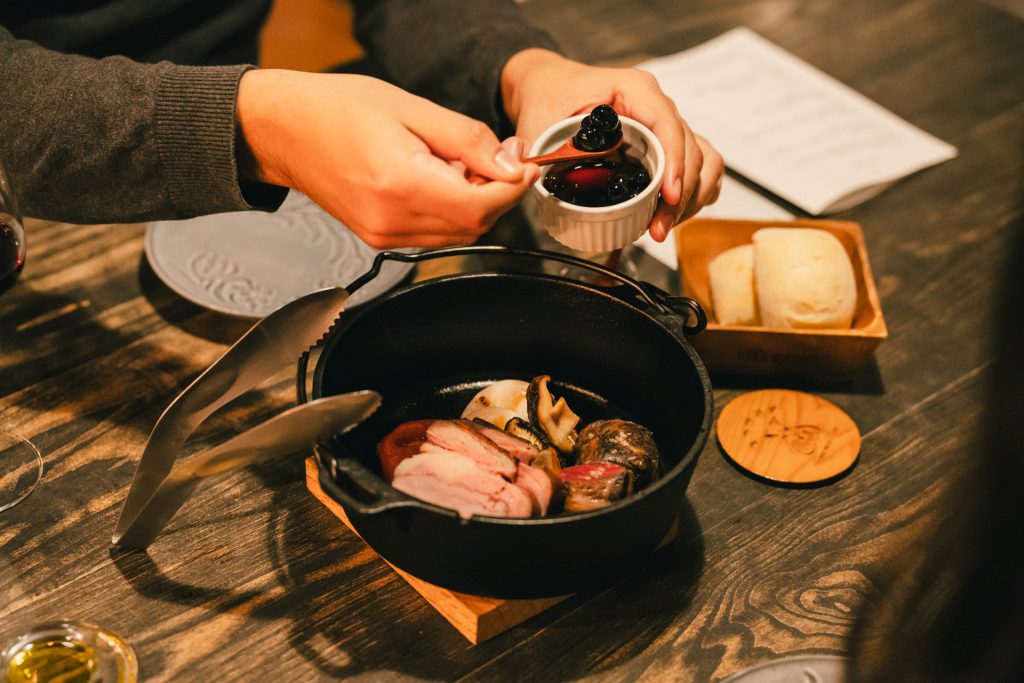
The meal is coming to an end.
The dessert is kunebu mousse and pistachio affogato. Chopped orange rind has been added to bring out the flavor of the kunebu. It is accompanied by a warm sauce of white chocolate and pistachio to further enhance the aroma.
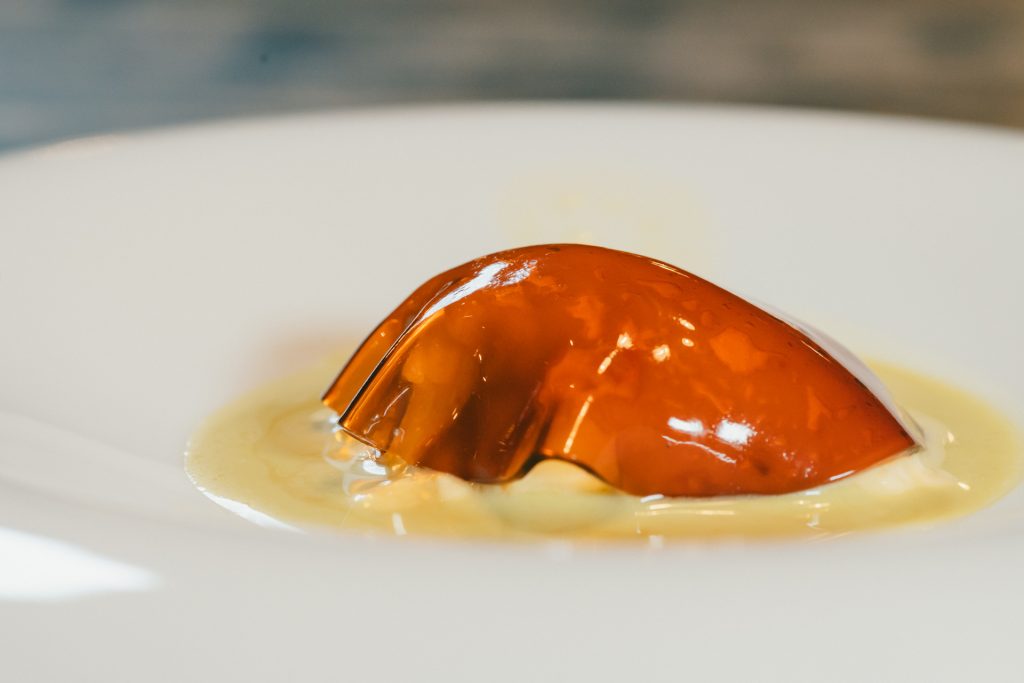
The shiny espresso sheet is so beautiful that it seems a waste to eat it.
The coffee, which is served in a cup from the Itsuki Ware Donguri Studio, gives one time to contemplate Itsuki.

Looking outside while basking in the afterglow of the meal, one sees a completely dark night sky, but the time spent at Keiryu Villa ITSUKI is not over.
This Premium Menu comes with a snack set for the guest room and a gift bottle of Kuma shochu.。
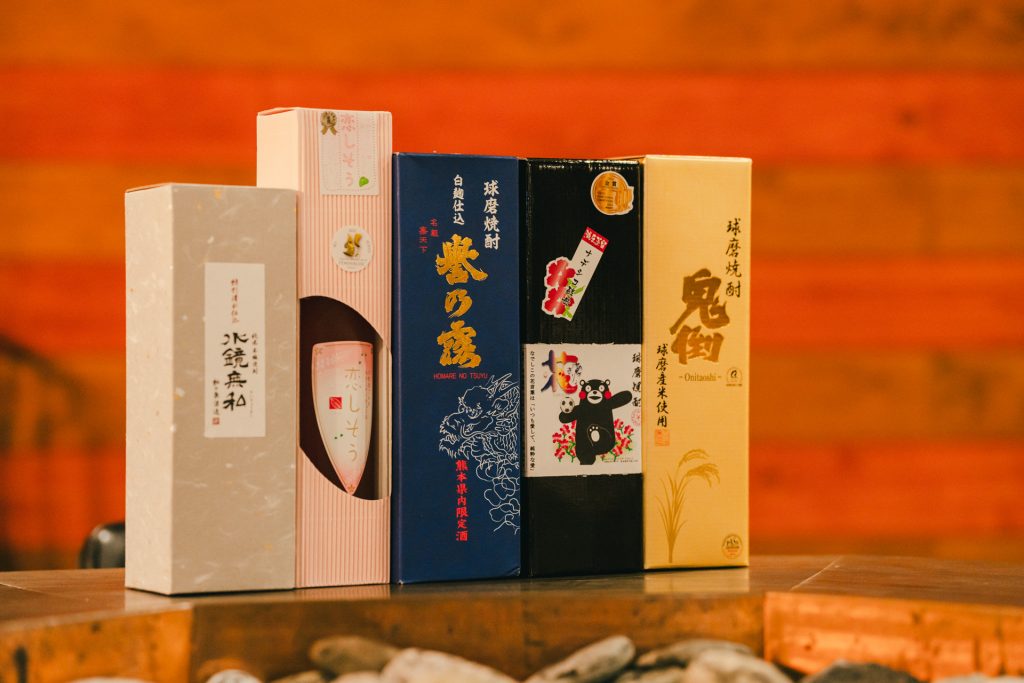
From the 27 brewers in Hitoyoshi and Kuma, the staff selected 5 types of shochu for sampling. Guests can select a bottle of their favorite, along with a sake cup from the Takemiyagama kiln in Kashima Town and take them back to their room.

The snack of the day is bagna cauda with Itsuki vegetables. Heat up your pellet stove and relax listening to the sounds of nature.
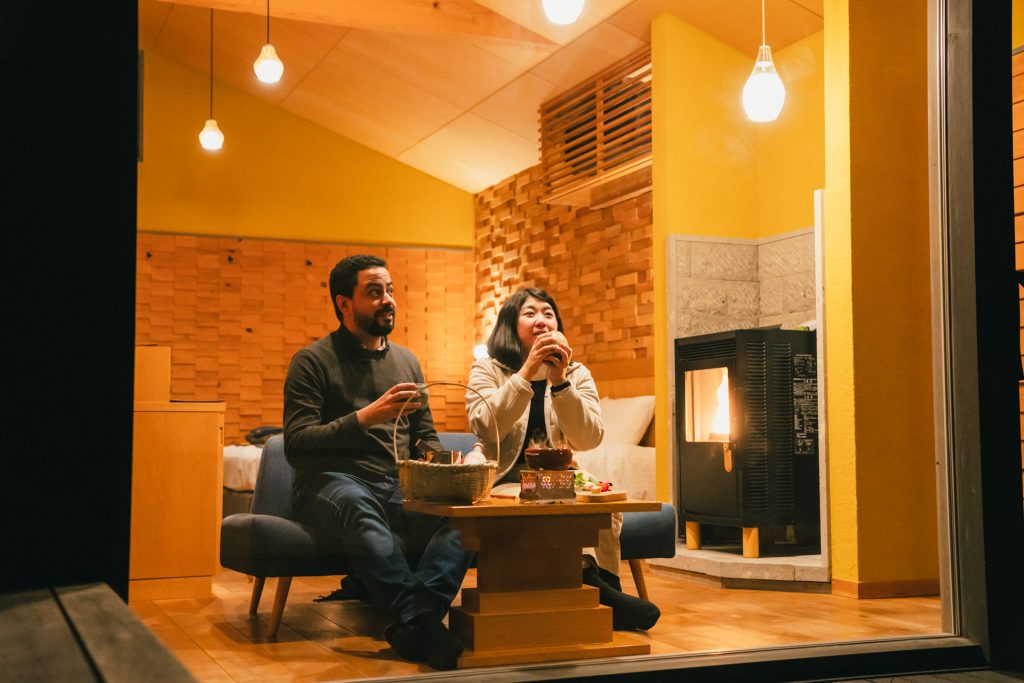
Related article: Keiryu Villa ITSUKI, Kiyoshi Shiiba Select Itsuki Kunebu
Restaurant information
Address:2859-7 Ko, Itsuki Village, Kuma District, Kumamoto Prefecture
TEL:0966-29-8055
Business hours:Check-in: 15:00; check-out: 11:00 (every day)
Website:https://keiryuvilla.com
Reservations for the Premium Menu
Each restaurant has different ingredients in its Premium Menu, so diners may enjoy Kumamoto’s seasonal dishes. Please directly contact the restaurant for details.
Premium Stay: Special grilled cuisine using carefully selected ingredients plus lodging at Keiryu Villa
Price:38,000 yen per person
Tel.: 0966-29-8055
 Facebookでシェア
Facebookでシェア Twitterでシェア
Twitterでシェア LINEでシェア
LINEでシェア
